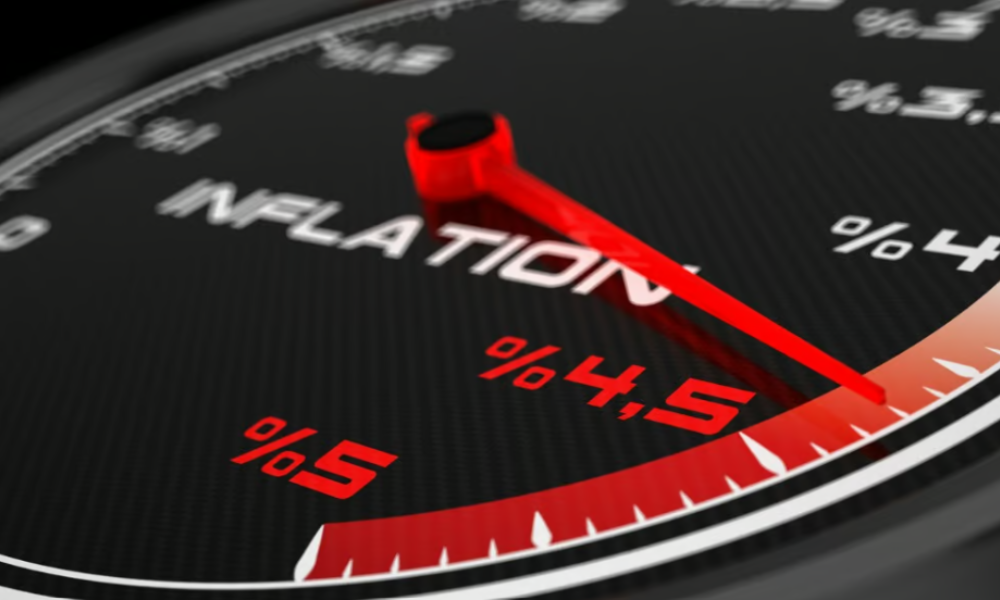US inflation unexpectedly rose in September, sparking debate over the Federal Reserve's next move

US inflation increased more than expected in September, pausing the recent progress toward moderating price pressures, according to BNN Bloomberg.
The core consumer price index, which excludes food and energy costs, rose by 0.3 percent for the second consecutive month. This disrupted a series of lower inflation readings.
Bureau of Labor Statistics data showed that the three-month annualized rate climbed to 3.1 percent, the highest level since May, based on Bloomberg's calculations.
Economists regard the core CPI as a more accurate measure of underlying inflation compared to the overall CPI. That measure increased 0.2 percent from the previous month, largely driven by housing and food prices, which contributed to over 75 percent of the total rise.
Goods prices, which had been decreasing for the past year, also rose during the month.
This higher-than-expected inflation data, along with the recent strong US jobs report, is likely to intensify the debate on whether the Federal Reserve will implement a small interest-rate cut next month or pause after the large September reduction.
Officials had initially planned for a further half-point reduction by the end of the year, with many closely monitoring developments in the labour market.
Olu Sonola, head of US economic research at Fitch Ratings, remarked, “Inflation is dying, but not dead.” He added that the strong September employment figures, combined with this inflation report, suggest the Fed will maintain a cautious approach.
While Sonola predicts a quarter-point rate cut in November, he advises not to assume a cut in December.
After the release of the inflation data, the S&P 500 opened lower, two-year Treasury yields fell, and the US dollar weakened.
Traders increased their expectations of a 25-basis-point Fed rate cut next month, further supported by another report showing that unemployment benefit applications had risen to their highest level in over a year.
The Federal Reserve began reducing borrowing costs in September with a significant 50-basis-point cut, following improvements in inflation and weak labour-market data.
Minutes from the September meeting revealed significant debate over the size of the reduction, and officials speaking since then have expressed support for a gradual approach.
Among core goods, new and used car prices, along with apparel and furniture, contributed to the increase. Grocery prices also saw their highest rise since the beginning of the year, with notable increases in eggs and fresh fruit.
Within the services sector, car insurance, medical care, and airfares saw sharp price increases. Admission prices for sporting events surged by 10.9 percent, driven partly by the start of the football season.
Shelter prices, which form the largest component within services, rose by 0.2 percent, a sharp decline from the 0.5 percent increase in August.
Owners’ equivalent rent, a major subset of shelter costs, rose by 0.3 percent, also slowing compared to the previous month. Hotel prices, however, dropped unexpectedly, despite predictions of a significant increase.
Bloomberg Economics commented that despite the core CPI’s upside surprise, the report is unlikely to alter the FOMC's view that inflation is on a downward trend. Analysts Anna Wong and Stuart Paul expect the FOMC to proceed with a 25-basis-point rate cut at the November 6-7 meeting.
Excluding housing and energy, service prices increased by 0.4 percent, the largest rise since April. This marked the third consecutive acceleration, the longest such streak since early 2023.
Central bankers have emphasized the importance of focusing on this measure to assess the country’s inflation trajectory, though they calculate it using a separate index.
The personal consumption expenditures price index, which places less weight on shelter costs than the CPI, is trending closer to the Federal Reserve’s 2 percent target. This measure draws from the CPI and parts of the producer price index.
Many of the items that saw significant gains in the CPI, such as car insurance and airfares, will not affect the PCE, which is expected to show a more moderate increase when the data are released later in the month.
Policymakers also closely watch wage growth to gauge consumer spending trends. A separate report combining inflation data with recent wage figures indicated that real earnings increased by 1.5 percent from a year earlier, the largest gain since June 2023.
Social Security benefits will rise by 2.5 percent in 2025, the smallest increase since 2021, as calculated using CPI data for the annual cost-of-living adjustment.



